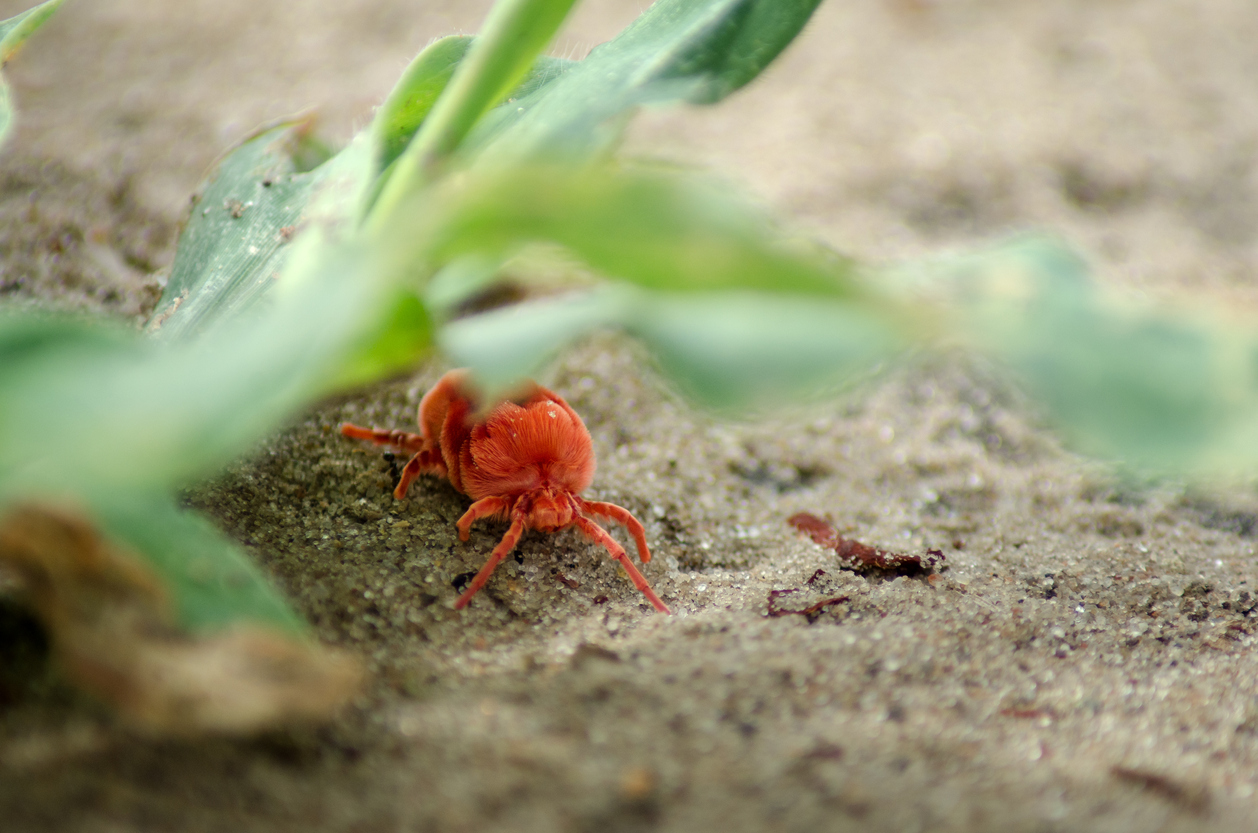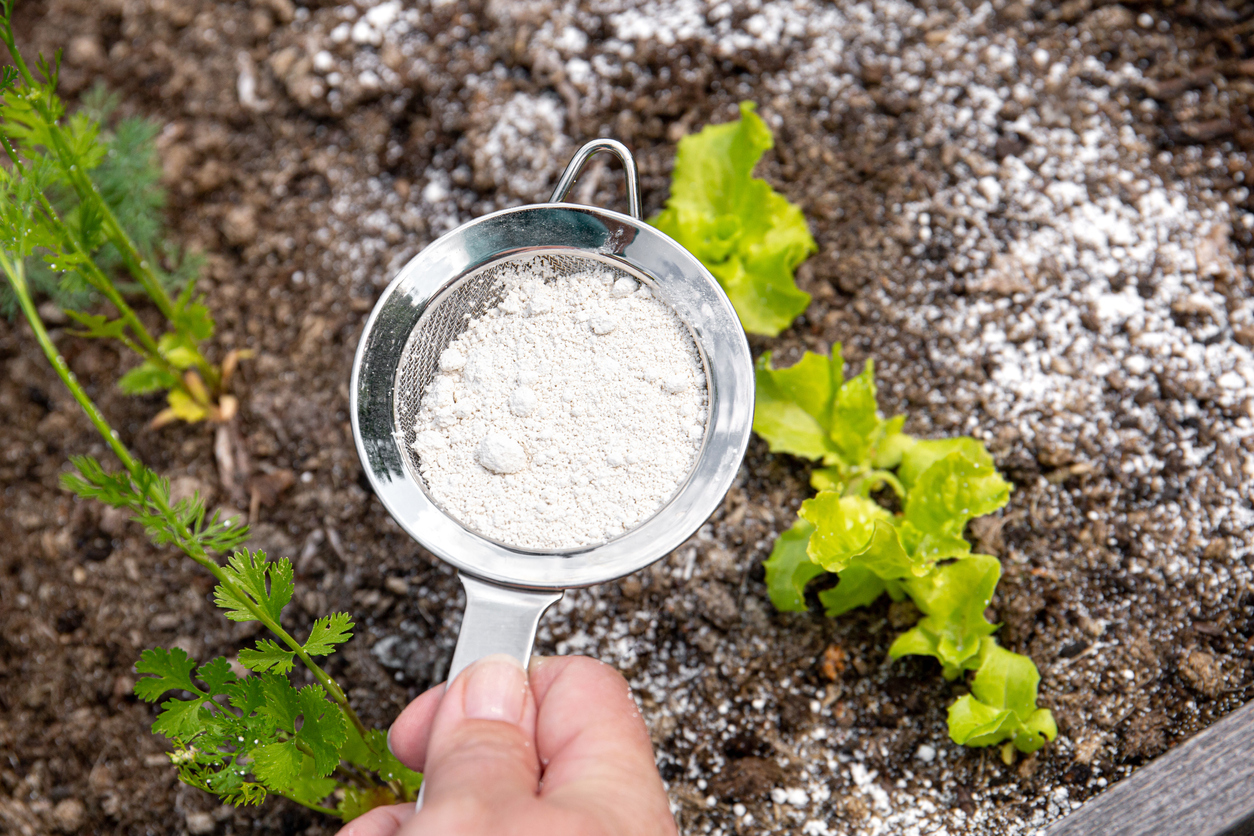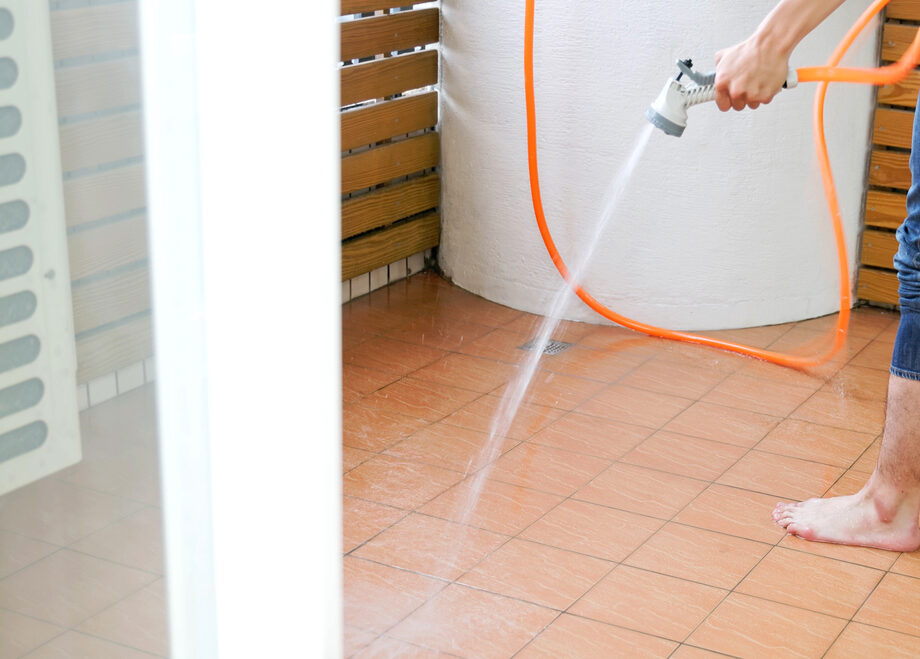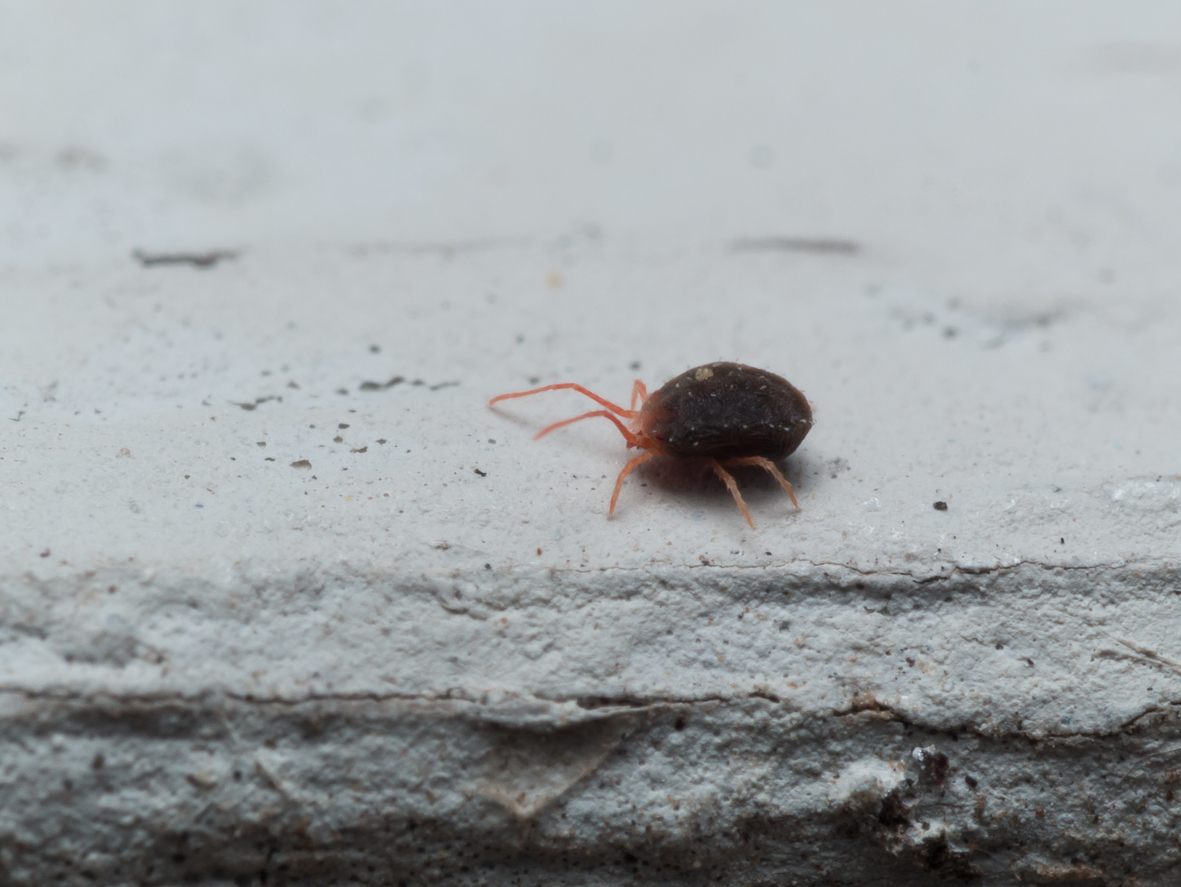We may earn revenue from the products available on this page and participate in affiliate programs. Learn More ›
Clover mites don’t bite, carry diseases, or destroy food stores like some other pests do, but these tiny red critters are still viewed by many homeowners as one of the worst bugs. No one wants to spot an infestation of clover mites crawling all around their home, over their plants, or on their lawn. Ahead, we’ll discuss how to get rid of clover mites and what you can do to stop them from returning to your home.
What Are Clover Mites and Are They Destructive?

Clover mites are a member of the spider mite family that are found across the United States and around the world. They are very small, only about 1/30 of an inch, which is approximately the same size as the period at the end of this sentence.
Clover mites, or Bryobia praetiosa, are red, with some being more of a reddish-brown color and others having a brighter red hue. Once clover mites reach the adult stage, the females are able to lay eggs whenever desired. Because of this, a few insects can rapidly turn into an infestation in the home or garden.
Thankfully, clover mites are not as destructive as some other pests. According to the University of Maryland Extension, they are considered nuisance pests. They do not cause damage to food or structures and do not carry diseases that can harm people or plants. So, if you’ve been asking “do clover mites bite?” the answer is no.
While they may not cause the extreme damage that some other bugs do, clover mites can still be a problem. Their red coloring can leave stains behind on furniture, linens, and other surfaces if the tiny red bugs are squished. Clover mites can also suck sap from plants, which can lead to stippling or discoloration.
Because clover mites are so tiny, it can be difficult to keep them out of the home. They can gain entry through the smallest of openings, such as those found in a screen. Some signs that you may have an infestation include red staining on surfaces in the home, such as carpets, window sills, or window coverings. Discoloration in the leaves of your plants can also be a sign that the clover mites have been sucking their sap.
What Attracts Clover Mites?

Clover mites may be attracted to your home or garden for a few different reasons, the foremost being moisture. Humid areas in the home, such as the kitchen or bathroom, are often very appealing for them. Moist piles of lawn clippings or leaves in the yard can encourage a clover mite infestation. Mulch also retains moisture, so when it is lining the foundation of a home, the mites may be more likely to transition into the house.
Lawns that are higher in nutrients are also more appealing to clover mites and can increase your chances of an infestation. Similarly, nutrient-rich compost or rotting organic material, such as wood, can also attract clover mites to your yard.
How to Get Rid of Clover Mites Indoors and Out
While many recommend the use of pesticides to deal with an infestation, learning how to get rid of clover mites naturally is safer for you, your household, and the planet. According to the EPA, some pesticides are carcinogens, while others can cause problems with the endocrine system, nervous system, and other important functions.
Diatomaceous Earth

Diatomaceous earth—which can also come in handy when getting rid of chiggers—is a natural solution to help clear up a clover mite infestation. The reason diatomaceous earth can be so effective is because the tiny fossilized remains are so sharp. They will puncture the mite’s exoskeleton, causing them to dry out and die.
Jeremy Yamaguchi, the CEO of Lawn Love, cites diatomaceous earth as his preferred method for getting rid of the little red bugs. He explains, “For the best results, apply this product when you don’t expect rain for at least 24 hours. If the pests are still there after a rain, you’ll need to apply DE again.”
This home remedy for clover mites can also be used inside the house, just take care to avoid inhaling the powder or letting it come into contact with your skin. If you have pets or children, you may want to keep them away from the areas where it is applied until the mites have been killed and you have vacuumed it up.
Vacuum Cleaner

If you have clover mites in the house, your trusty vacuum cleaner can come to the rescue. Use it to suck up any clover mites that you see. Vacuuming is preferred to squishing and wiping up because it will prevent them from staining the surfaces in the home.
Dish Soap and Water

Dish soap and water can be used as a natural clover mite insecticide. Add some water and a few drops of dish soap to a spray bottle. Spray any areas where you see evidence of clover mites. The soap will interfere with the mite’s waxy coating, leading to dehydration and death. To avoid leaving stains behind, vacuum up any dead clover mites once the area dries.
Sticky Traps

Placing sticky traps along window sills or other areas where you have spotted clover mites can help trap the bugs and prevent them from invading your home. Clover mites do not fly, so if the trap is in their path, they will not be able to go around it without getting caught.
Spray Water

Using the hose to spray water over affected exterior areas is another clover mites treatment that you can try. Because the bugs are so small, a strong rush or water from the garden hose should rinse them away.
If you know clover mites are present, spend a little extra time watering any dry patches in your lawn. Clover mite eggs are often laid in these areas, and spraying them with water can stop the eggs from hatching.
Tips for Preventing a Clover Mite Infestation
Preventing a pest infestation eliminates the headaches of trying to clear one up. Below are a few tips that can help you keep clover mites from invading your home, your plants, or your lawn.
- Seal potential entry points: Sealing cracks in the foundation, gaps around windows and doors, and other potential entry points into your home can make it more difficult for the little red bugs to make it into your home. Of course, because they are so tiny, they may still find a way in, but limiting their access can help keep the numbers down.
- Keep the perimeter of your house free of plants: Avoid placing any plants or shrubs too close to your house. The clover mites will move from the branches of the plants onto the siding of your home, making it more likely that they’ll enter. When planting shrubs and bushes, keep their mature size in mind and plant them a minimum of half of this mature size from the side of your home. For example, if the shrub will grow to be about 15 feet, it should be planted at least 7.5 feet from the home.
- Don’t overfertilize your lawn: Avoid using too much fertilizer. Fertilizing one to two times a year should be sufficient for maintaining a lush, green lawn without making it overly appealing for clover mites.


